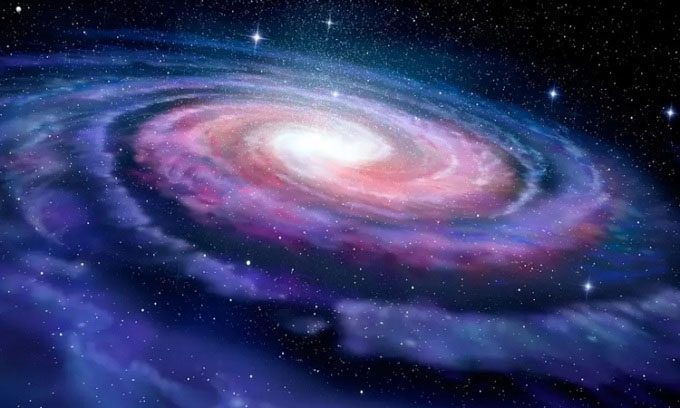Data from the GAIA observatory helps a team of Chinese researchers calculate the mass of the Milky Way galaxy to be 805 billion solar masses.

Simulation of the shape of the Milky Way. (Photo: iStock).
The figure of 805 billion solar masses may sound quite large, but it is actually significantly smaller than the estimate made by a team of American scientists in 2019. Measuring the mass of the Milky Way is currently impossible with existing technology; therefore, researchers can only provide increasingly accurate estimates over the past few years.
The team of scientists from the National Astronomical Observatory of the Chinese Academy of Sciences detailed the methodology behind their calculations in a paper published in the Astrophysical Journal, as reported by Interesting Engineering on April 24. The research team utilized a larger dataset of 260,000 stars. Most of this data comes from the GAIA observatory, launched in 2013 from the European spaceport in France. The mission of the spacecraft is to create a three-dimensional map of celestial objects in the Milky Way. Thus, its data serves as a comprehensive chart of this galaxy.
Based on this dataset, the scientists surveyed the Milky Way and measured its rotation curve. The rotation curve indicates the orbital speed of a celestial object relative to the distance from the center of the galaxy. The research team also considered dark matter in their calculations. In their paper, they stated that the new estimate is the most accurate measurement of the Milky Way’s rotation curve to date. However, the dataset of 260,000 stars is still relatively small, as the Milky Way is believed to contain at least 100 billion stars of varying masses.
In 2019, another group of scientists from the Space Telescope Science Institute (STScI) in Baltimore, Maryland, estimated the mass of the Milky Way to be 1.5 trillion solar masses. To calculate this, they used the Hubble Space Telescope and GAIA data to measure the three-dimensional motion of globular star clusters. “We want to know the mass of the Milky Way more accurately so that we can compare it with simulations of galaxies in the evolving universe,” explained scientist Roeland van der Marel at STScI.


















































